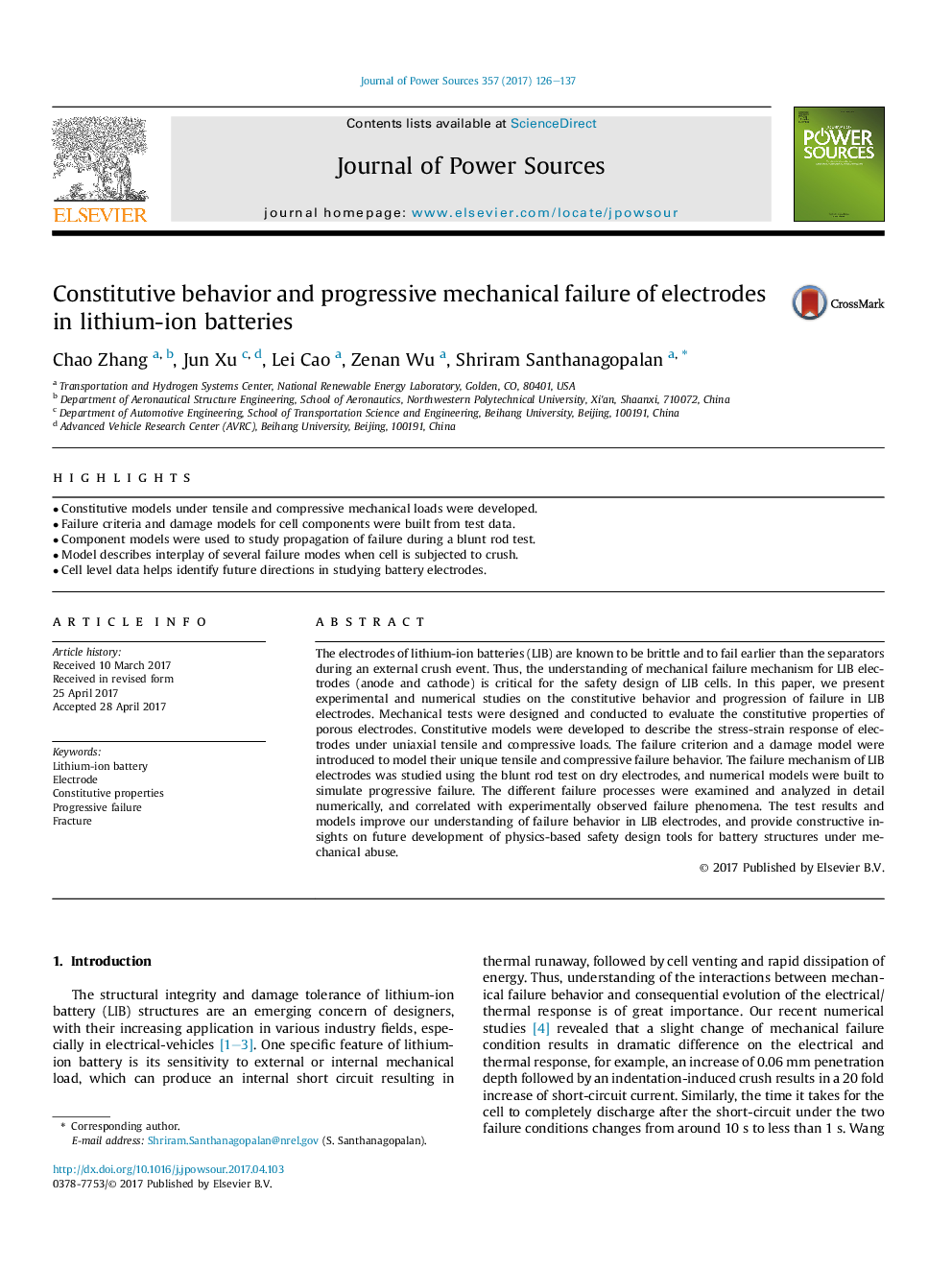| Article ID | Journal | Published Year | Pages | File Type |
|---|---|---|---|---|
| 5149203 | Journal of Power Sources | 2017 | 12 Pages |
Abstract
The electrodes of lithium-ion batteries (LIB) are known to be brittle and to fail earlier than the separators during an external crush event. Thus, the understanding of mechanical failure mechanism for LIB electrodes (anode and cathode) is critical for the safety design of LIB cells. In this paper, we present experimental and numerical studies on the constitutive behavior and progression of failure in LIB electrodes. Mechanical tests were designed and conducted to evaluate the constitutive properties of porous electrodes. Constitutive models were developed to describe the stress-strain response of electrodes under uniaxial tensile and compressive loads. The failure criterion and a damage model were introduced to model their unique tensile and compressive failure behavior. The failure mechanism of LIB electrodes was studied using the blunt rod test on dry electrodes, and numerical models were built to simulate progressive failure. The different failure processes were examined and analyzed in detail numerically, and correlated with experimentally observed failure phenomena. The test results and models improve our understanding of failure behavior in LIB electrodes, and provide constructive insights on future development of physics-based safety design tools for battery structures under mechanical abuse.
Related Topics
Physical Sciences and Engineering
Chemistry
Electrochemistry
Authors
Chao Zhang, Jun Xu, Lei Cao, Zenan Wu, Shriram Santhanagopalan,
